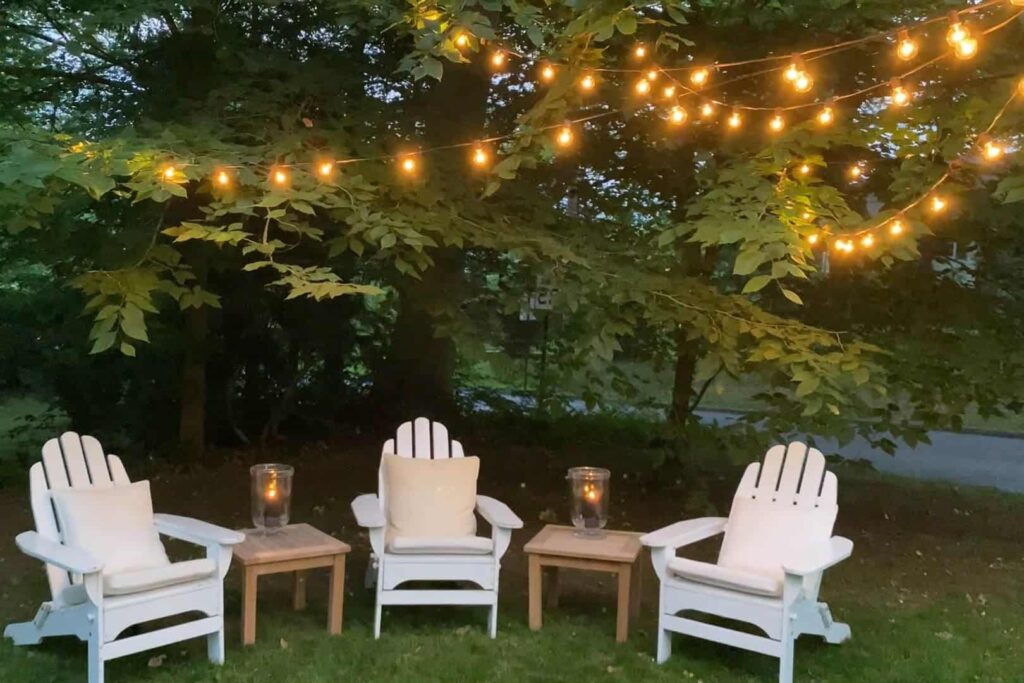Why Lighting a Patio Without Electricity?
For those who love spending time outdoors, a patio is like an extension of their living space. It’s the perfect place to relax and unwind after a long day, host a party with friends, or simply enjoy a quiet evening with a loved one. However, sometimes it’s challenging to light up a patio without access to an electrical outlet. Fortunately, there are several options available for lighting a patio without electricity. In fact, opting for non-electric lighting has several advantages over traditional electrical lighting.
First and foremost, lighting a patio without electricity is cost-effective. Installing electrical wiring and buying traditional light fixtures can be expensive, especially if you have a large patio. On the other hand, non-electric lighting options such as solar-powered lights, battery-operated lights, and LED candles are affordable and easy to install.
Additionally, non-electric lighting provides you with more flexibility and convenience. Since these lights are not connected to any electrical system, you can move them around as you please and change the lighting arrangement whenever you want. Moreover, some non-electric lighting options such as solar-powered lights and battery-operated lights come with remote control, making it easy to turn them on and off from a distance.
Moreover, non-electric lighting creates a warm and intimate ambiance that traditional lighting cannot match. Whether it’s a string of fairy lights or a candle-lit chandelier, the warm glow of non-electric lights helps create a comfortable and relaxing atmosphere that you’ll love spending time in.
Finally, opting for non-electric lighting is an eco-friendly choice. By using solar-powered lights or LED bulbs, you reduce your carbon footprint and contribute to a sustainable environment. Additionally, most non-electric lighting options come with long-lasting bulbs and rechargeable batteries, reducing the need for frequent replacements.
In conclusion, lighting a patio without electricity is not only cost-effective and convenient, but it also helps create a warm and intimate ambiance while being eco-friendly. With so many non-electric lighting options available, there’s no reason not to light up your patio and enjoy it to its fullest potential.
What is Needed for This Project?
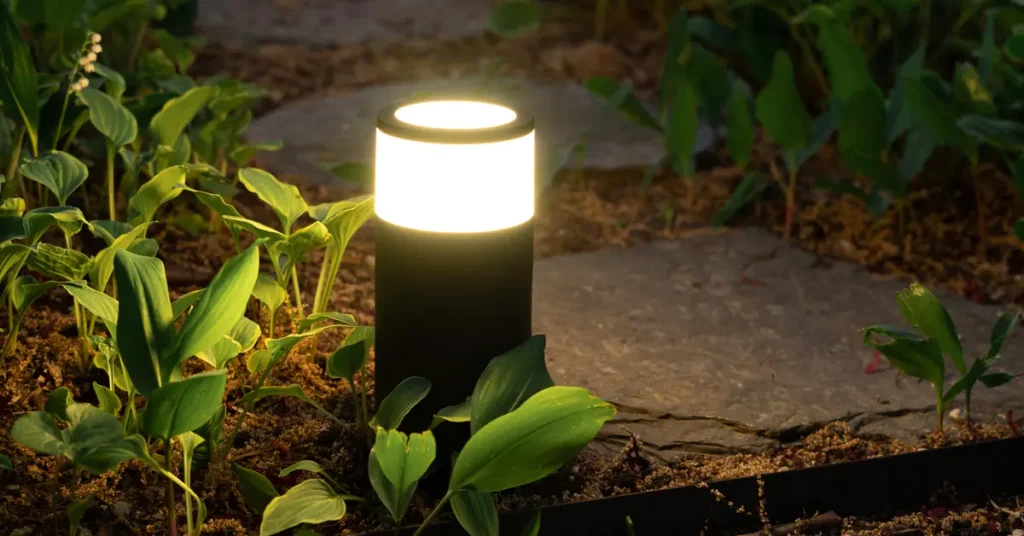
If you’re looking to light your patio without electricity, there are a few things you’ll need to make sure you have before starting your project. Here are some of the essential items you should gather to make your non-electric patio lighting dream a reality:
1. Lighting Options: First and foremost, you’ll need to decide on the type of lighting you want to use. Popular non-electric options include solar-powered lights, battery-operated lights, and LED candles. Depending on your preferences, you may also consider fairy lights or string lights for a more whimsical touch.
2. Batteries: If you opt for battery-operated lights, you’ll need to make sure you have the necessary batteries. Be sure to check the specifications of your lights to determine the type of batteries required.
3. Chargers or Solar Panels: For solar-powered lights, you will need to purchase a solar panel to charge the lights during the day. If your lights come with rechargeable batteries, you may need to purchase a charger as well.
4. Mounting Hardware: Whether you plan on hanging your lights or positioning them on the ground, you’ll need the necessary hardware to install the lights. This may include hooks, clips, or stakes.
5. Timer or Remote: Depending on the type of lighting you choose, you may want to consider a timer or remote to control the lights. This will make it easier to turn on and off the lights without having to manually do it every time.
By gathering these essential items, you’ll be well on your way to creating a beautifully lit non-electric patio space. With the right care and attention, your patio will be the perfect spot to unwind, relax, and enjoy the warm glow of your eco-friendly, non-electric lighting options.
Battery-Powered Lights
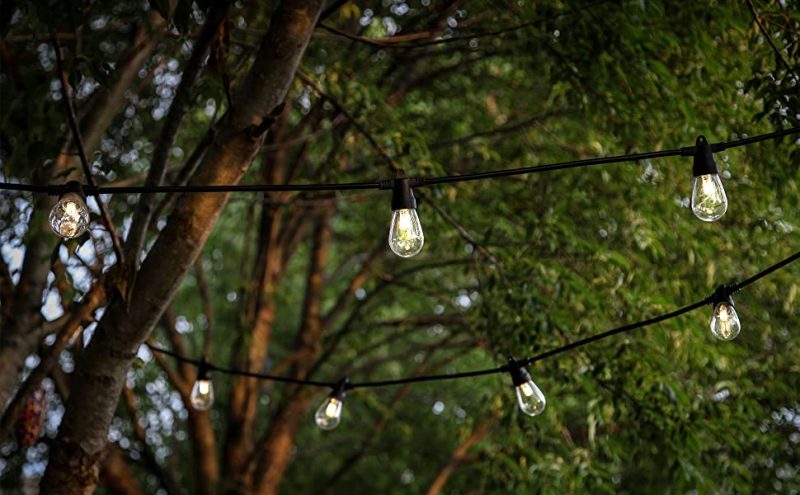
When it comes to lighting your outdoor space without electricity, battery-powered lights are a great option to consider. These lights use replaceable batteries to power LED bulbs, making them durable, long-lasting, and energy-efficient.
One of the main benefits of battery-powered lights is their portability. Unlike solar-powered lights, they don’t require a solar panel or a direct source of sunlight to function. This means you can easily move them around your patio or garden as needed, without worrying about finding a power source for them.
Another advantage of battery-powered lights is the added control they give you over your outdoor lighting. Many battery-powered lights come with adjustable brightness levels or different modes, like flashing or steady light. Some even come equipped with motion sensors, automatically turning on when someone walks by and conserving battery power when not in use.
In addition to their practical benefits, battery-powered lights can also create a warm and inviting ambiance in your outdoor space. With options like string lights, outdoor chandeliers, and even real wax candles, you can achieve a cozy and intimate atmosphere without the need for harsh electrical lighting.
When using battery-powered lights, it’s important to remember to keep extra batteries on hand. Be sure to check the specifications of your lights to determine the type of batteries required and their expected lifespan. By using battery-powered lights, you can enjoy a beautiful and eco-friendly outdoor lighting experience without the need for electricity.
Lighting Without Electricity
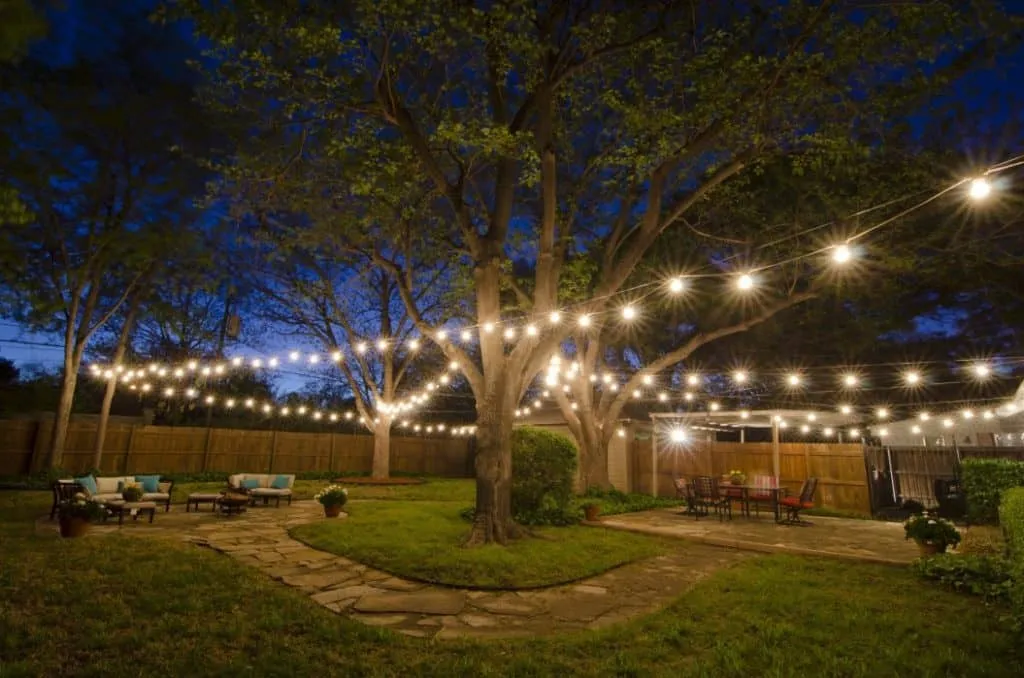
Lighting is an essential component of any indoor or outdoor space. While electricity has made it easier to light up a room or outdoor area, there are several situations where lighting without electricity is necessary or beneficial. Whether you’re looking to lower your energy usage, add ambiance to an outdoor gathering, or need emergency lighting during a power outage, there are several ways to light up a space without electricity.
One of the most popular options for lighting without electricity is solar-powered lighting. Solar garden lights or path lighting can provide a soft and warm glow to a garden or pathway, without the need for electrical outlets or wiring. They use solar panels to collect energy from the sun during the day and then use it to light up the area at night. Additionally, many solar-powered lights have rechargeable batteries, ensuring they can continue to provide light even when the sun isn’t out.
Another option for lighting without electricity is battery-operated lights. Battery-powered lights can be easily moved around and don’t require electricity to function, making them a convenient solution for lighting up outdoor spaces like patios, decks, or gardens. Many battery-powered lights use long-lasting LED bulbs and come in a variety of options including string lights, motion sensor lights, and even chandeliers.
Fairy lights are another popular option for lighting without electricity. They can be used both indoors and outdoors and add a whimsical touch to any space. Fairy lights are often battery-operated, making them a convenient option for spaces without electrical outlets. They can be draped around furniture, strung across a ceiling, or used to create a magical atmosphere for outdoor events.
If you’re looking for a more natural and rustic lighting option, naked flames or homemade lanterns can also be used to light up a space without electricity. From candles to oil lamps, these options add a cozy and intimate ambiance to any space. Additionally, homemade lanterns made from jars or cans can be filled with tea lights to create a warm and inviting centerpiece.
Overall, there are several options for lighting without electricity, making it possible to add ambiance, style, and functionality to any space. From solar-powered lights to battery-operated fixtures and even natural methods like naked flames, the possibilities are endless. With the right lighting, you can create a warm and inviting atmosphere, no electricity required.
Rechargeable Batteries
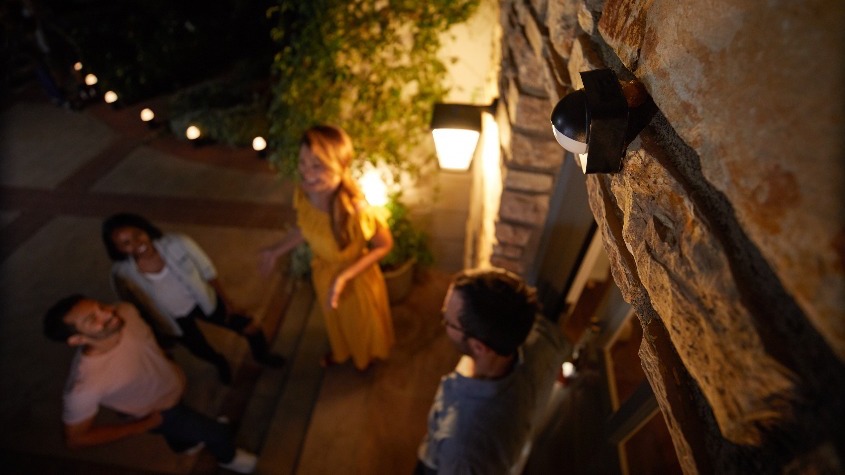
Rechargeable batteries have become increasingly popular in recent years due to their cost-effectiveness, convenience, and environmental sustainability. Unlike traditional disposable batteries, rechargeable batteries can be reused multiple times, thereby reducing the amount of waste that is normally produced by single-use batteries.
Rechargeable batteries are available in different chemistries, including nickel-metal hydride (NiMH), lithium-ion (Li-ion), and nickel-cadmium (NiCd). Each chemistry has its advantages and disadvantages, so it’s important to understand the different types and their capabilities to determine which one is best suited for your needs.
One of the main advantages of rechargeable batteries is their long lifespan. Depending on the type of battery and how it’s used, rechargeable batteries can last for hundreds or even thousands of charge cycles. This can save a considerable amount of money over time, as users won’t need to constantly buy expensive disposable batteries.
Rechargeable batteries are also more environmentally friendly than disposable batteries. Since rechargeable batteries can be recharged multiple times, fewer batteries will end up in landfills, where they can leak harmful chemicals into the soil and water.
Another advantage of rechargeable batteries is their convenience. Unlike disposable batteries, rechargeable batteries can be recharged at home using a charger that connects to a power outlet or USB port. This means that users can keep their batteries topped up without having to constantly replace them.
When it comes to choosing which type of rechargeable battery to use, NiMH batteries are the most common type and are well-suited for lower-power devices like remote controls and flashlights. For higher-power devices like cameras and power tools, Li-ion batteries are the best choice due to their higher energy density and longer lifespan. NiCd batteries are less common due to their higher toxicity and lower energy density.
Overall, rechargeable batteries are a cost-effective, convenient, and environmentally sustainable option for powering electronics and devices. Understanding the different chemistries and how they function can help consumers choose the best rechargeable batteries for their needs, ultimately saving money and reducing their environmental impact.
Selecting the Right Outdoor Light Fixtures
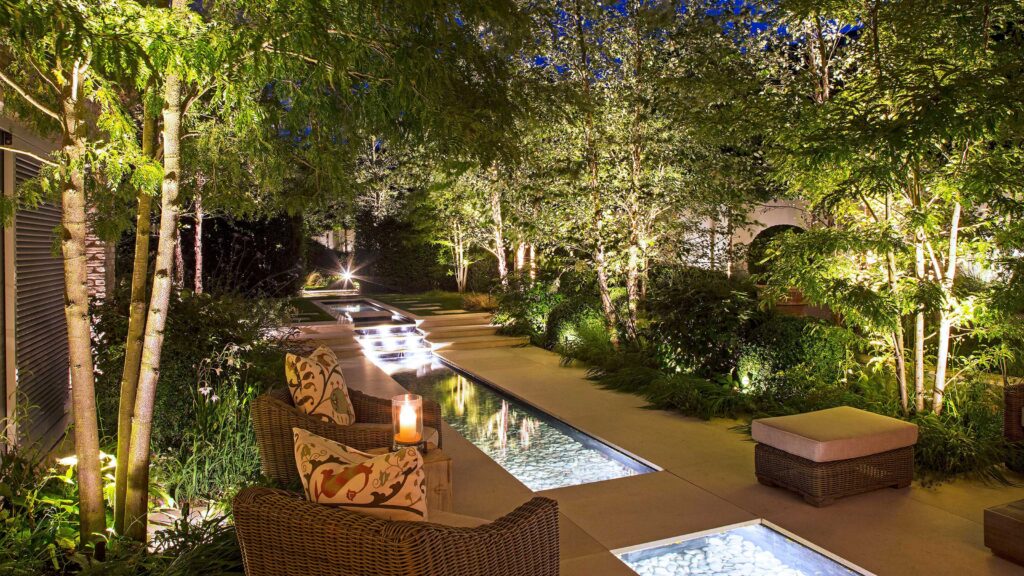
Lighting is an important element when it comes to transforming your outdoor space into a functional and aesthetically pleasing area. Selecting the right outdoor light fixtures can add beauty, ambiance, and functionality to your space. With so many options available, it can be challenging to determine which outdoor lighting fixtures will work best for you. Here are some tips to help you make the right choice.
Consider the Purpose of Your Lighting
The first step in selecting the right outdoor light fixture is to determine the purpose of your lighting. Are you looking to create an intimate ambiance for entertaining guests on your patio, or do you need bright, focused lighting for security purposes? Once you determine the purpose of your lighting, you will be able to narrow down your options.
Choose the Right Type of Fixture
There are different types of outdoor light fixtures available, including wall sconces, flush mounts, pendant lights, and post lights. Each type of fixture has its unique features and functions for different outdoor spaces and highlights elements expertly. Wall sconces are great for lighting entryways, walkways, and accenting architectural features. Pendant lights can create a cozy and intimate atmosphere in outdoor seating areas. Post lights are perfect for driveways, decks, and pathways.
Consider the Style
When selecting outdoor light fixtures, it’s important to consider the style of your home and outdoor space. You want to choose fixtures that complement your home’s architecture and blend in with the overall aesthetic of your outdoor space. For example, traditional-style homes may benefit from lantern-style fixtures, while modern homes may fare better with sleeker, more contemporary fixtures.
Choose the Right Bulbs
When it comes to outdoor lighting, you want to choose bulbs that are energy-efficient and long-lasting. LED bulbs are an excellent choice because they consume less electricity and last longer than traditional incandescent bulbs. Be sure to check the recommended wattage for each fixture and choose bulbs that match the recommended wattage.
In conclusion, selecting the right outdoor light fixtures can enhance your outdoor space, create ambiance, and provide safety and security. By considering the purpose of your lighting, choosing the right type of fixture, considering the style, and choosing the right bulbs, you can make an informed decision on the best outdoor light fixtures for your space.
Brightness and Color of the Lights
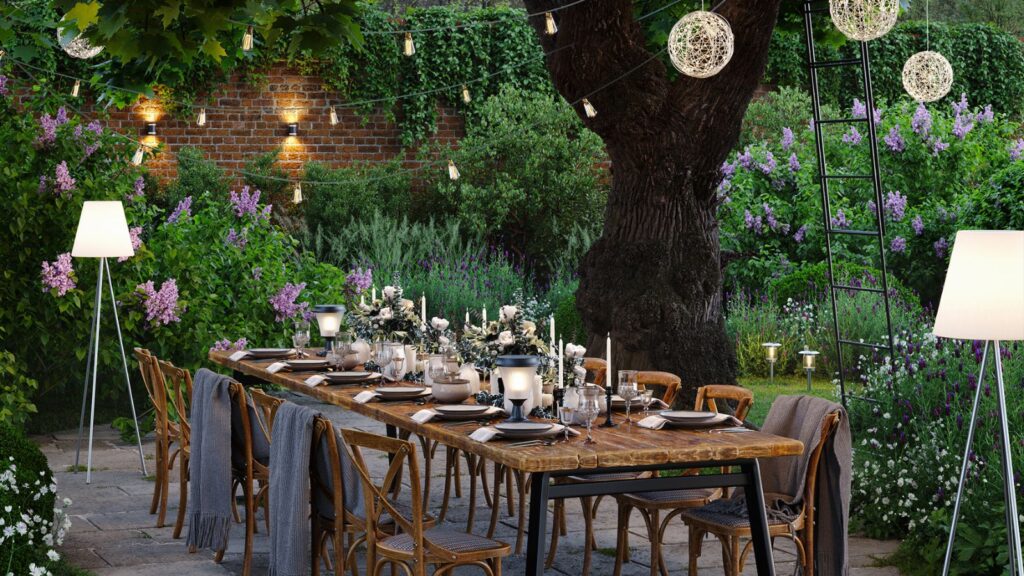
When it comes to outdoor lighting, brightness and color are important factors to consider. The level of brightness you choose will depend on the purpose of the lighting, as well as your personal preferences. Here are a few things to consider as you choose the brightness of your outdoor lights:
Ambient Lighting vs. Task Lighting
Ambient lighting is designed to provide overall illumination for a space. This type of lighting is usually soft and diffused, providing a warm glow that creates an inviting atmosphere. Task lighting, on the other hand, is brighter and more focused, providing illumination for specific activities. When choosing the brightness of your outdoor lights, it’s important to consider both the ambient lighting and task lighting needs of your outdoor space.
Brightness Levels
Brightness is measured in lumens, and different types of outdoor lights will have different levels of brightness. For example, solar garden lights might have a lower brightness level than LED floodlights. The brightness level you choose will depend on the purpose of the lighting. If you’re looking to create a cozy and intimate atmosphere, you may want to choose outdoor lights with lower brightness levels. If you need brighter lighting for security or task lighting purposes, you may opt for higher brightness levels.
Color Temperature
The color temperature of your outdoor lights can also have an impact on the look and feel of your outdoor space. Color temperature is measured on the Kelvin scale, with lower numbers indicating warmer, yellower light, and higher numbers indicating cooler, bluer light. Typically, outdoor lights with a color temperature around 2700K will provide a warm, inviting glow, while lights with a color temperature around 5000K will provide a cooler, brighter light.
Color Rendering Index
In addition to color temperature, the color rendering index (CRI) is another important factor to consider when choosing outdoor lights. The CRI measures how accurately a light source renders colors compared to natural sunlight. A CRI of 80 or higher is recommended for outdoor lighting, as it will provide better color accuracy and make outdoor spaces look more vibrant and natural.
In conclusion, the brightness and color of your outdoor lights can have a big impact on the look and feel of your outdoor space. Consider the purpose of the lighting, as well as the color temperature and CRI, as you choose the right outdoor lights for your needs. With the right combination of brightness and color, you can create a warm and inviting outdoor space that everyone will enjoy.
How Many Lights Do You Need?
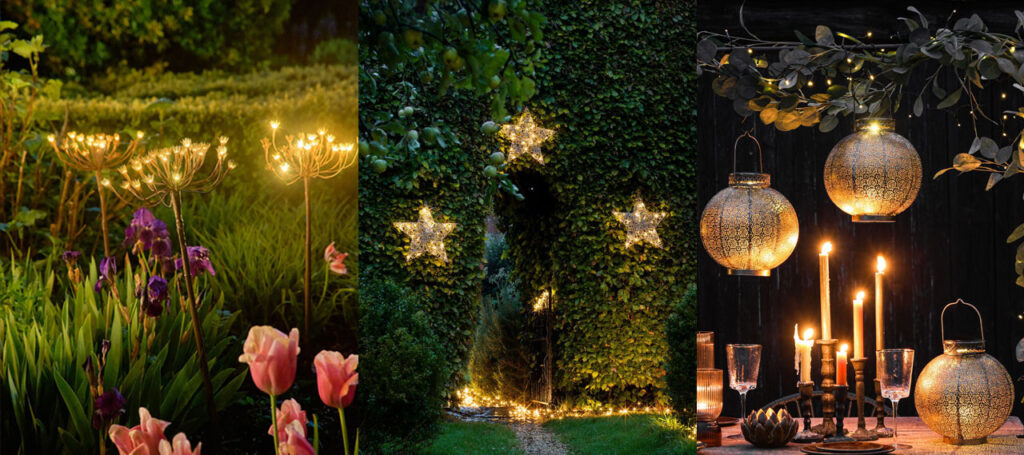
When it comes to lighting your patio or outdoor space without electricity, one of the most common questions is how many lights do you need? The answer largely depends on the size of your outdoor space and the purpose of the lighting.
If you have a smaller patio or outdoor area, a few well-placed lights may be all you need to provide the desired level of illumination. For example, you might choose to hang a string of battery-operated fairy lights around the perimeter of the space or install a few solar-powered path lights along the walkway.
On the other hand, if you have a larger outdoor space or you want to use your patio for entertaining or outdoor activities, you may need more lights to provide adequate illumination. In this case, you might opt for a combination of different lighting types and fixtures, including solar garden globes, LED floodlights, and battery-operated chandeliers.
Ultimately, the number of lights you need will depend on your personal preferences and the specific needs of your outdoor space. If you’re unsure of how many lights to use, it’s always a good idea to start with a few and add more as needed until you achieve the desired level of illumination.
However many lights you use, be sure to consider the brightness and color temperature of the bulbs when making your selection. Choose bulbs or fixtures that will both provide adequate illumination and create the desired ambiance for your outdoor space.
Waterproof or Weatherproof Options?
When it comes to outdoor equipment and gadgets, one of the most important factors to consider is the weather. In particular, if you’re looking for items that need to stay dry and functional in the wet and wild outdoors, you have two options: waterproof or weatherproof.
Waterproof items are designed to withstand water exposure without damage. They’re typically sealed or coated with a protective layer that keeps water from penetrating the device and causing harm to the internal components. Waterproof gear ranges from rugged cameras to watches and even smartphones that can be submerged in water without damage.
Weatherproof items, on the other hand, are designed to withstand harsh weather conditions, including high humidity, extreme temperatures, and precipitation. While they may not be fully submersible like waterproof items, weatherproof gear is still durable enough to withstand heavy rain and snow without suffering damage.
So, which one is right for you? It ultimately depends on what you plan to use the item for and how much water exposure it will be subjected to. For example, if you’re planning a day-long kayaking trip, you’ll want all of your gear to be waterproof so that you can keep it safe in the event of an accidental dip in the river.
If you’re looking for outdoor furniture, you’ll want weatherproof options that can stand up to the sun, rain, and wind without rusting or deteriorating. If you live in an area with frequent rain or snow, it’s best to opt for all-weather furniture made from durable materials like resin wicker, aluminum, or teak.
Whether you’re shopping for electronics, furniture, or even clothing, understanding the difference between waterproof and weatherproof options will help you make informed and practical purchasing decisions. And with the right gear, you can enjoy the great outdoors without worrying about inclement weather ruining your day.
Different Types of Outdoor Lights Available
When it comes to lighting up your outdoor space, there are many options available. From string lights to path lighting, each type of outdoor light can create a unique ambiance. Here are some of the most popular types of outdoor lights:
1. Solar-powered lights: These lights are powered by the sun and are a popular choice for those who are looking for eco-friendly options. They come in various styles such as garden lights, path lights, and string lights.
2. LED lights: LED lights are an energy-efficient option that come in various brightness levels and colors. They can be used for spotlights, floodlights, pendant lights, and more.
3. Porch lights: These lights are typically fixed to the wall or ceiling of a porch or entryway, providing illumination and security. They come in a variety of styles and finishes to fit any decor.
4. String lights: String lights are an easy way to add a warm glow to any outdoor space. They come in different lengths and styles, from classic bulbs to fairy lights.
5. Motion sensor lights: These lights turn on automatically when they detect movement, making them a great option for outdoor security or lighting up a path at night.
6. Battery-operated lights: Battery-operated lights are a convenient option for outdoor lighting without the need for electrical outlets. They come in a variety of styles, including string lights, candles, and chandeliers.
7. Path lighting: Path lighting is a popular option for illuminating walkways or gardens. They come in various styles and are designed to withstand outdoor weather conditions.
8. Outdoor lighting fixtures: These fixtures come in a range of styles and finishes, including lanterns, sconces, and post lights. They are ideal for lighting up a patio or outdoor living space.
Choosing the right type of outdoor light can depend on various factors such as your personal style, budget, and lighting needs. With so many options available, you can easily find the perfect outdoor lighting solution to create a warm and welcoming ambiance for your outdoor space.

